Andre Ware, Quarterback
We’re big fans of the NFL Draft here at Goliath and for all the right reasons; we love the showmanship, the drama, and the look on the players’ faces when they’ve been drafted into the league they’ve aspired towards most of their lives. Now, we know that not all of those players will go on to have long and fruitful careers; there’s been many a player drafted into the NFL who failed to live up to expectations.
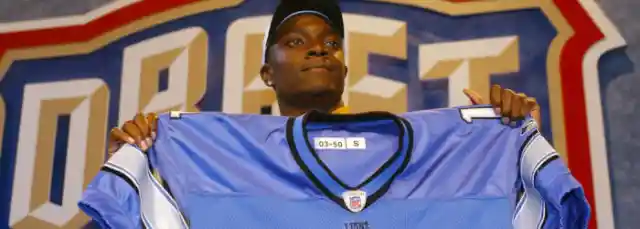
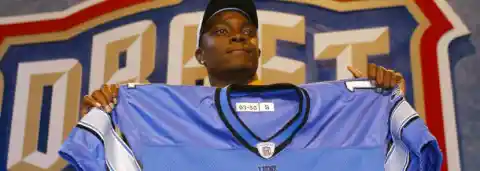
We call those players “busts,” and with NFL season in full swing we’ve decided to take a look back at some of the most disappointing players in NFL history. We’ll look at why they were drafted so highly, who drafted them and why, and what went wrong in their careers to land them a spot on this list.
A promising quarterback with the University of Houston, Andre Ware won both the Heisman Trophy and the Davey O’Brien Award after a junior year that saw him throw for 4,699 yards and 44 touchdowns, setting a total of 26 NCAA records in the process. With such incredible talent, it was no surprise to anyone that he forewent his senior year to enter the NFL Draft in 1990, where he was drafted seventh by the Detroit Lions. During his four-year stint with the Lions he only played in 14 games, six of which he started. He was then bounced around to the Los Angeles Raiders, where he was released after only a few games, and later the Jacksonville Jaguars, who cut him from the just team prior to the start of the regular season.
Blair Thomas, Running Back
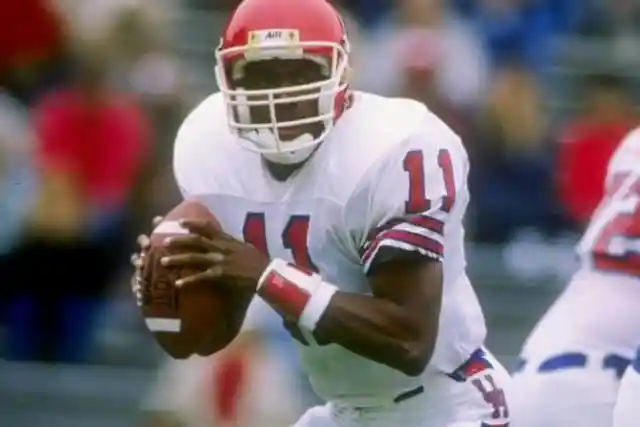
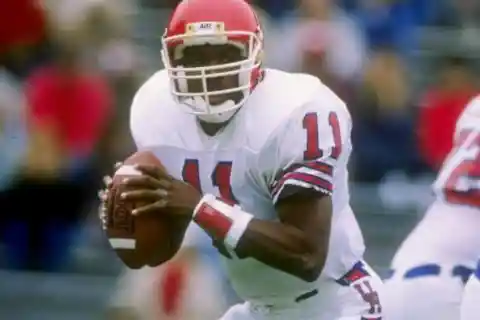
Ware then moved to the CFL, where he played for three teams in three years, before finishing his career with the Berlin Thunder, a NFL Europe team based in Germany. Needless to say, his best days were behind him before he ever entered the NFL.
Drafted in the first round (second overall) by the New York Jets in the 1990 NFL Draft, Blair Thomas seemed to have all the qualities of a standout player. Having had an impressive college playing career with Penn State University, where he rushed 3,301 yards and 21 touchdowns in two seasons, it was expected that these talents would transfer to the professional league. Unfortunately, Thomas’s reputation did not live up to the hype, as he only managed to rush 2,000 yards and five touchdowns during his entire four-year career with the Jets.
Brian Bosworth, Linebacker
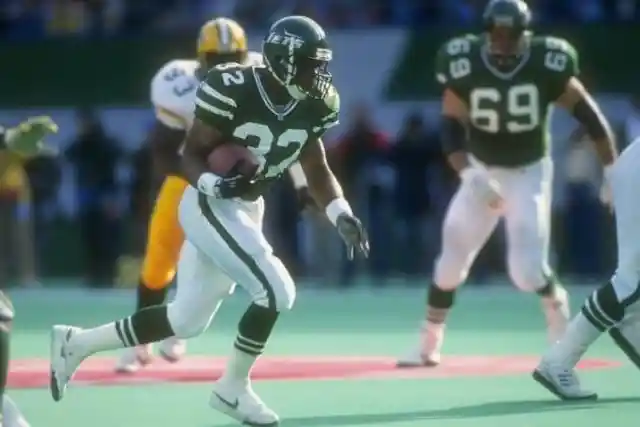
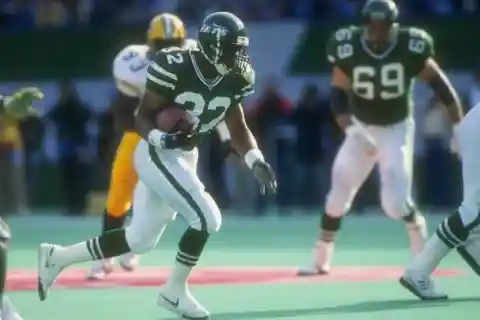
Talk about a disappointment.
Before even entering the NFL, Brian Bosworth was a topic of controversy within the NCAA for his wild hairstyles, brash comments and steroid use. Despite all this, however, he was considered to be a strong tackler and won the Butkus Award twice, the only player to ever do so. He was drafted by the Seattle Seahawks in the 1987 supplemental draft, where he signed a 10-year deal for $11 million, which, at the time, was the biggest contract in Seahawks history and the largest rookie contract in the NFL. Bosworth played fairly well in his rookie season, where he appeared in 12 games, but was better known for his off-the-field antics.
Blaine Gabbert, Quarterback
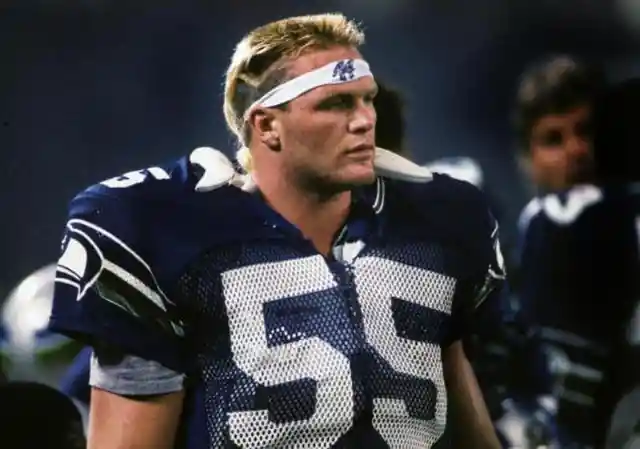
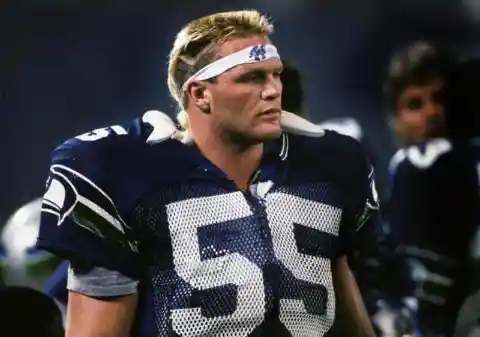
His glory days were short-lived, though, as he was forced to retire after only his second season in the NFL due to a shoulder injury he suffered during the 1988 season. He’s remembered now as one of the worst flops in League history.
Considered to be one of the most recent draft flops, Blaine Gabbert is still an active player in the NFL, but has struggled over the past four seasons with a series of injuries and weak stats. He was first drafted by the Jacksonville Jaguars in the 2011 NFL Draft as the 10th overall pick, but his rookie season was anything but memorable, seeing him rank among the worst in the league for sacks, fumbles and yards per attempt. The following two seasons weren’t any better for Gabbert, who suffered a season-ending right forearm injury in 2012, and a broken thumb, lacerated hand and hamstring injury in 2013.
David Carr, Quarterback
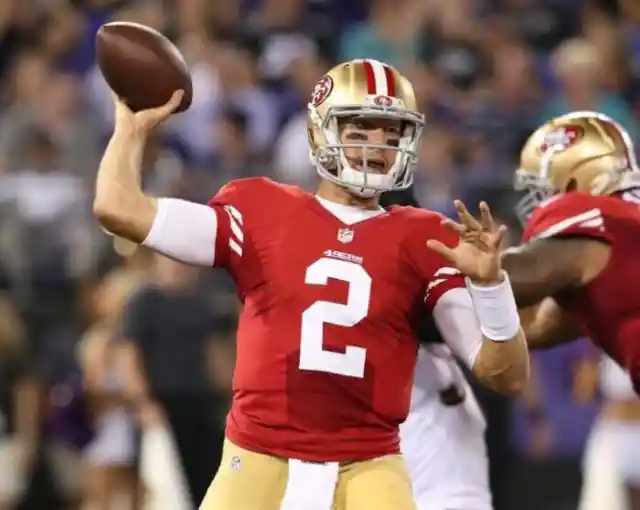
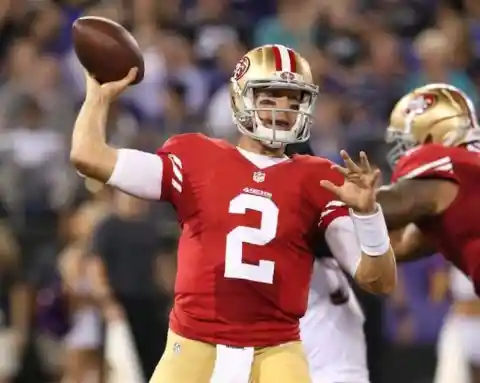
He was then traded to the San Francisco 49ers in 2014, where he is currently the backup quarterback.
A star quarterback with Fresno State during the 2000 and 2001 seasons, David Carr carried a lot of promise when he entered the NFL in 2002 as the first pick overall by the Houston Texans, who were then a brand new expansion team. While his rookie season was fairly successful, with 2,592 passing yards, 9 touchdowns and 15 interceptions, he was sacked a whopping 76 times. After several roller coaster seasons with the Texans, which never saw them reach the .500 mark, Carr was released from the team. He then signed with the Carolina Panthers, but suffered a back injury early in the season and therefore played very little of the remaining games, seeing him move on to the New York Giants and then the San Francisco 49ers to fulfill the backup quarterback role.
Akili Smith, Quarterback
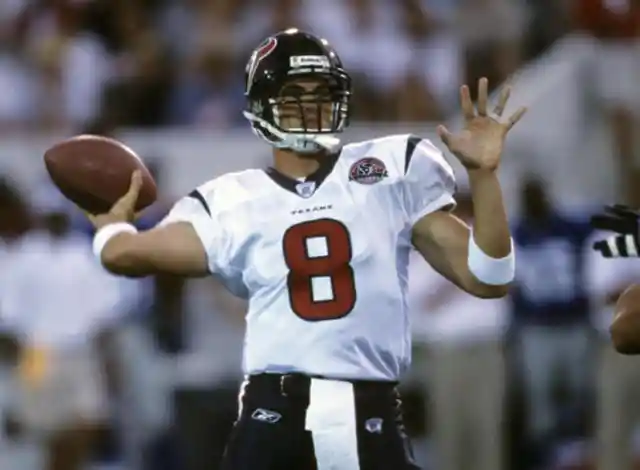
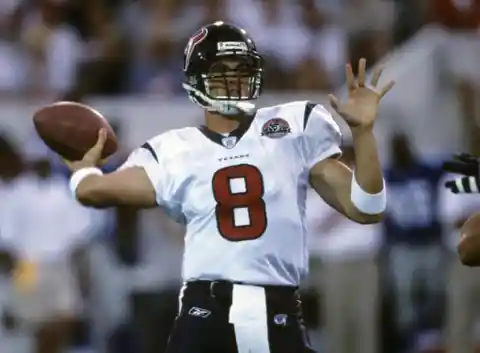
He played his final seasons with the New York Giants, as the backup to Eli Manning, before announcing his retirement in 2013, just six short seasons after he was drafted. Certainly not the career people had envisioned for this number one draft pick.
Drafted by the Cincinnati Bengals in the first round (third overall) of the 1999 NFL draft, Akili Smith played college football with the Oregon Ducks, racking up impressive statistics and displaying outstanding mobility to go along with his solid skills as a passer. Smith, who was hailed as the saviour of a Bengals franchise that had been searching for a young quarterback for quite some time, never achieved the same success with the Bengals as he did for the Ducks; in his time as a starting quarterback in Cincinnati, Smith threw only five touchdowns against thirteen interceptions over seventeen starts, before being released in 2002.
Vernon Gholston, Linebacker
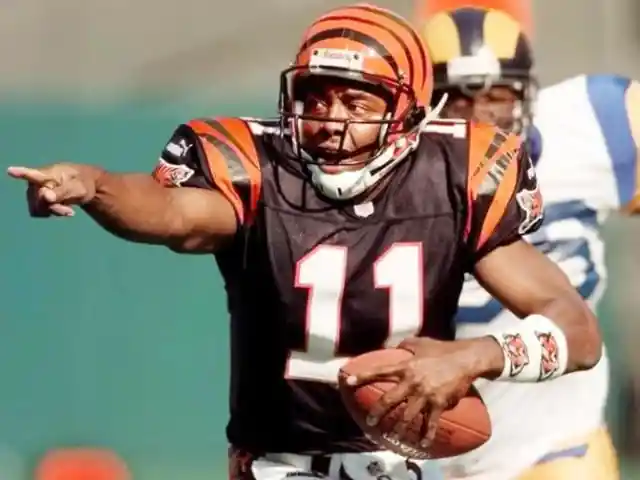
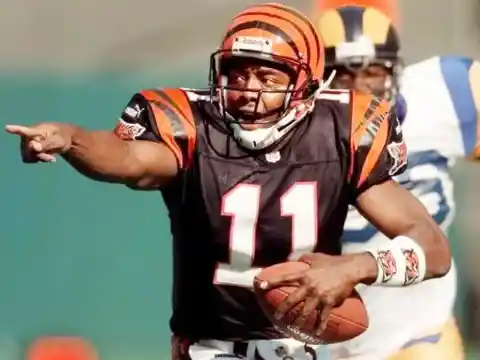
While he went on to play in games for the Frankfurt Galaxy of NFL Europe (remember that?!), Smith is widely regarded as one of the biggest busts in NFL history, and most definitely in Bengals history (although he won’t be the last Bengal to appear on this list…)
There are really only two types of linebackers who play in the NFL: there’s those who play inside and stop the run, and those who play outside and rush the quarterback (loose terms, but they’ll do for now). Vernon Gholston was the latter type and was drafted in the first round (sixth overall) by the New York Jets to put his pass-rushing skills to good use. Now, that statement wouldn’t be so troubling if he’d managed to record even a single sack during his three year NFL career. That’s right; Gholston’s entire career lasted a shockingly short three seasons, during which he only started five games and never recorded a professional sack.
Tim Couch, Quarterback
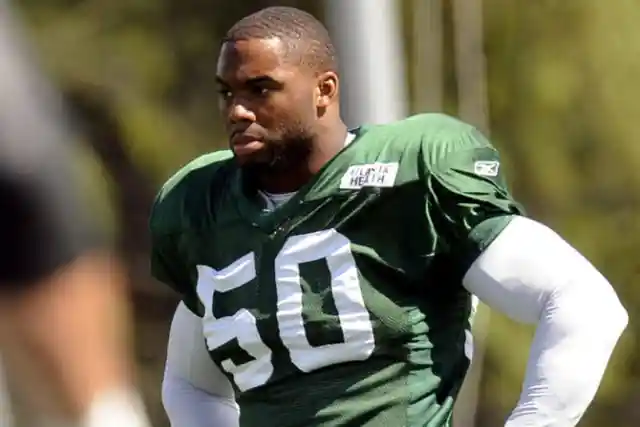
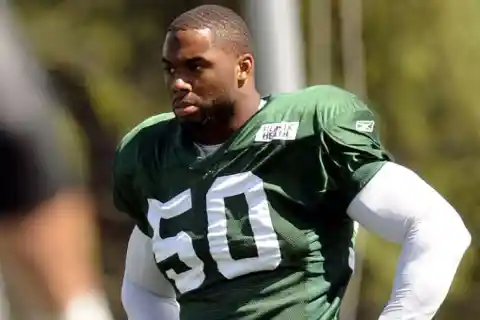
A workout warrior who absolutely blew up the NFL combine, Gholston never put those athletic skills to use in the pros, and was entirely unable to grasp the complexities of defensive guru Rex Ryan’s defensive scheme. One of the biggest draft busts of all time, Gholston was paid tens of millions of dollars to contribute absolutely nothing to the Jets franchise.
We kind of feel sorry for Tim Couch, who was drafted by the Cleveland Browns in the first round (first overall) in 1999. First of all, he had to move to Cleveland. Just kidding Clevelandites; you’ve got Canton and the Rock and Roll Hall of Fame, we know you’re cool! But in all honesty, Couch didn’t stand much of a chance in Cleveland, as the team had only recently been moved back to the city and had a dearth of talent.
Ki-Jana Carter, Running Back
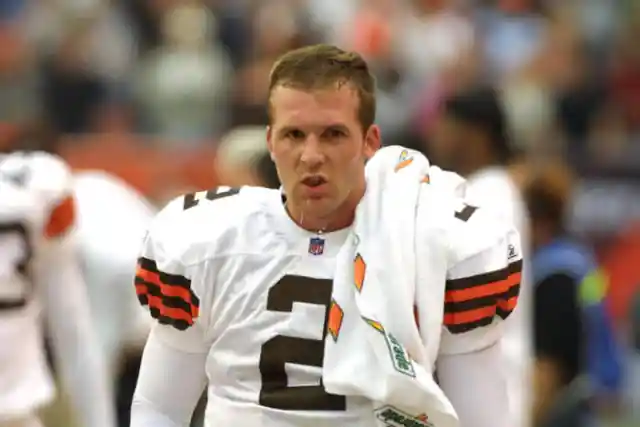
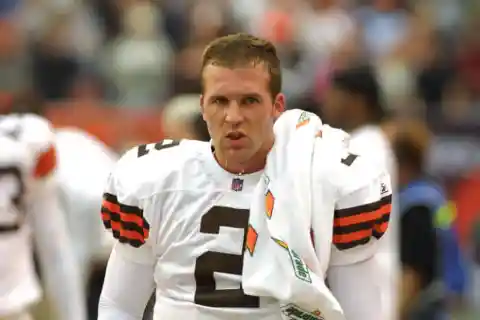
Couch, who displayed one of the more impressive throwing arms in college ball during his time at Kentucky University, only threw for a meager 11,000 yards in his NFL career. He only lasted a short five seasons, during which he spent a vast amount of time being either injured or just plain ineffective. Not the savior Browns fans were looking for when they drafted the Kentucky Wildcat first overall.
It’s a rare thing to see a running back drafted in the first round of an NFL draft, as the position is generally regarded as having a short shelf life and being easily replaceable from a production standpoint. With that being said, it’s alarming to think how talented a running back must have to be in order to be drafted first overall. For an example of that, we can look to Ki-Jana Carter, who was drafted in the first round (first overall) by the Cincinnati Bengals in the 1995 NFL Draft (we told you there’d be more Bengals on here).
Aaron Curry, Linebacker
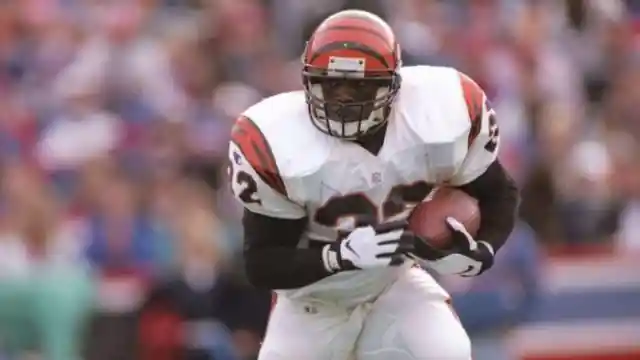
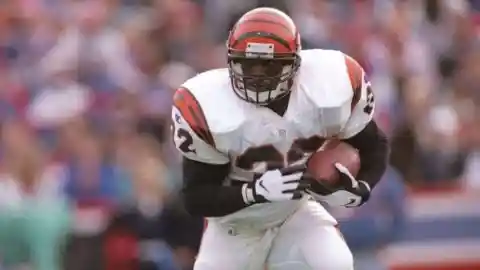
Carter, who was a supremely talented runner at Penn State, suffered a devastating knee injury early in his professional career and never fully recovered, only rushing for 1,144 yards across seven NFL seasons (a good NFL back reaches that number in one season, not seven).
Remember when we said Vernon Gholston is the kind of linebacker who chases the quarterback? Aaron Curry was the other kind, the type who covers receivers and tight ends while making a living tackling running backs. Drafted by the Seattle Seahawks in the first round (fourth overall) out of Wake Forest, Curry was viewed as a surefire Pro-Bowler thanks to his rock solid football instincts and his impressive movement skills on the field.
Lawrence Phillips, Running Back
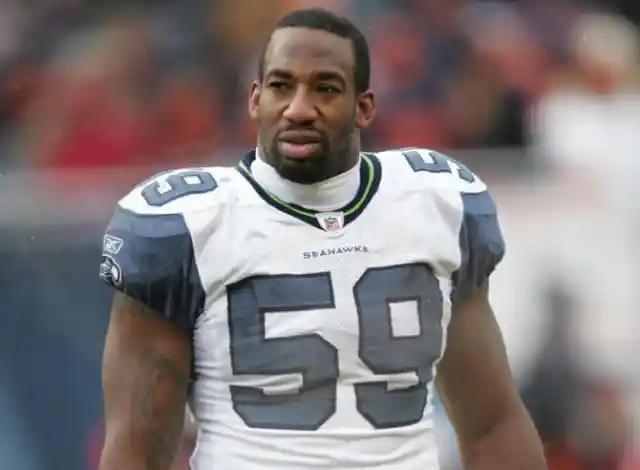
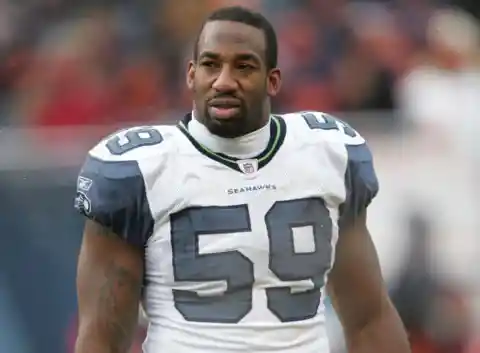
However, Curry was never able to put it together as a pro and was traded to the Oakland Raiders for a meager return following just two seasons as a Seahawk. Now out of the league, Curry lasted only five seasons as one of the biggest busts in the history of the linebacker position.
While we never like to see a player bust, both for the sake of the player and for the sake of the franchise, we don’t really feel bad for the St. Louis Rams when it comes to Lawrence Phillips, the now notorious running back who was drafted in the first round (sixth overall) by the Rams in 1996. A brutal man who faced criminal charges multiple times during his tenure at Nebraska, Phillips was an excellent football player on the field and a terrible person off of it, and it’s the latter which lead to his demise as an NFL running back.
Charles Rogers, Wide Receiver
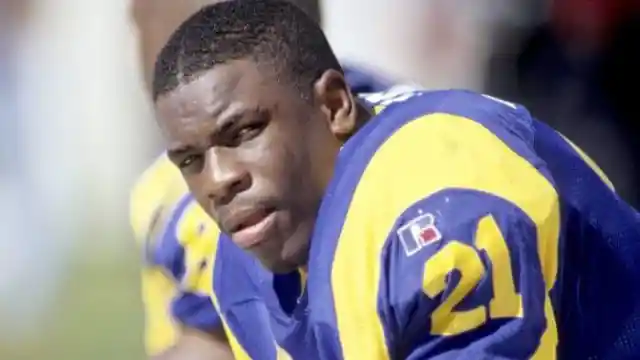
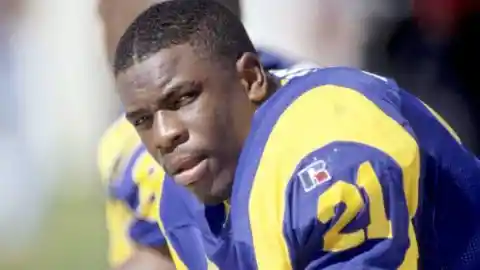
Phillips, who only lasted three seasons in the NFL before being cut (he left the Rams after they demoted him), rushed for just over 3,000 yards in his NFL career and remains one of the most talented players to never realize their full potential in the league.
If you spend some time watching highlights of Charles Rogers at Michigan State, you’ll come away amazed. He did special things on the football field, and those things contributed to him being drafted second overall by the Detroit Lions in the 2003 NFL draft. He was initially hailed as the next Randy Moss and a dynamic playmaker for a franchise sorely lacking in that department.
Tony Mandarich, Offensive Tackle
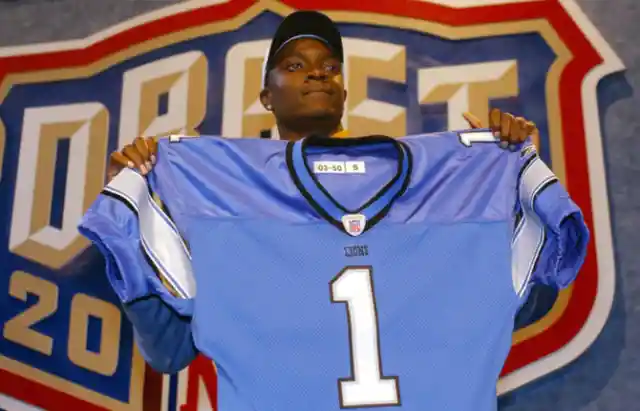
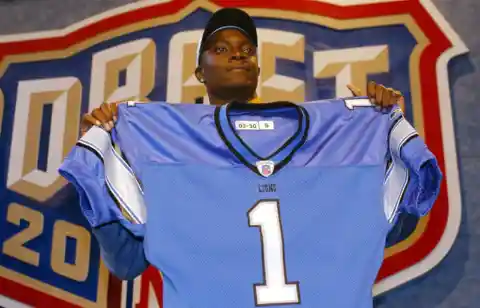
Unfortunately, Rogers never even came close to achieving the heights of Randy Moss; heck, Rogers never even got off the ground, as his career was derailed by injuries (a broken clavicle in his rookie year) and suspensions (he was arrested and suspended as a result of drug abuse). With only 36 receptions in his NFL career, Rogers is the biggest receiver bust in NFL history.
A physical specimen so impressive he was nicknamed “The Incredible Bulk,” Tony Mandarich holds the distinction of being the biggest non-quarterback to ever bust in the NFL. An offensive tackle drafted in the first round (second overall) by the Green Bay Packers, Mandarich played college ball at Michigan State, where he solidified his reputation as being the “safest pick in the history of the NFL draft.” The poor guy never stood a chance. His status as a massive bust is amplified by the historical company he kept; the other players drafted in the top five picks of 1989 were Troy Aikman, Barry Sanders, Derrick Thomas and Deion Sanders, who are all now in the Pro Football Hall of Fame.
Ryan Leaf, Quarterback
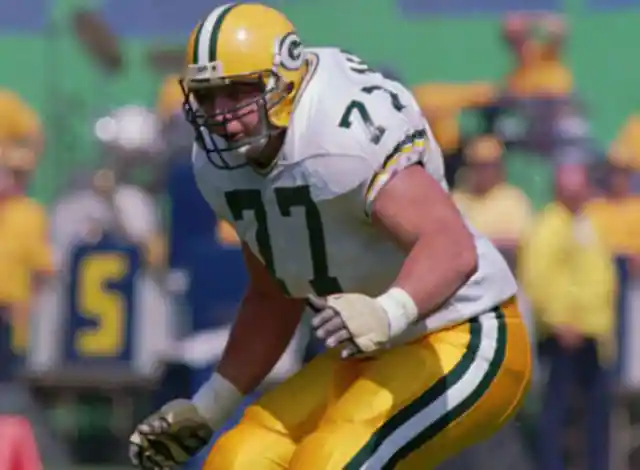
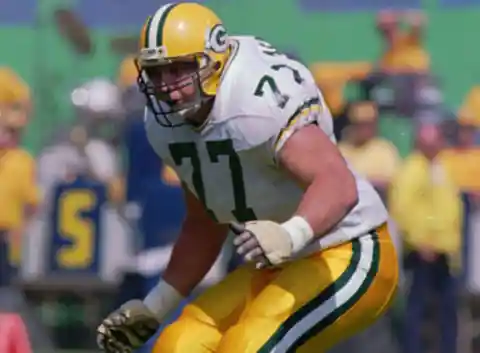
Now nicknamed “The Incredible Bust”, Mandarich remains one of the biggest flops in the history of the NFL.
It might be hard to believe now, but at the time of the 1998 NFL Draft there was a significant discussion regarding who might go first overall. Two quarterbacks were duelling for the position; one, a pro-ready Tennessee Volunteer with impressive lineage, and the other a gunslinging bad boy from Washington State with a reputation for making some spectacular plays (along with some pretty terrible ones). The first quarterback, a guy you might recognize by the name of Peyton Manning, was drafted first overall by the Indianapolis Colts that year, and went on to become one of the greatest quarterbacks in NFL history.
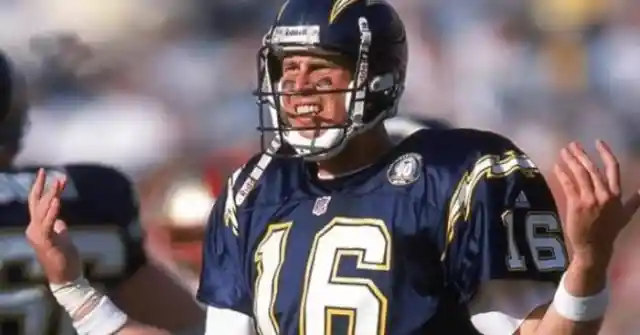
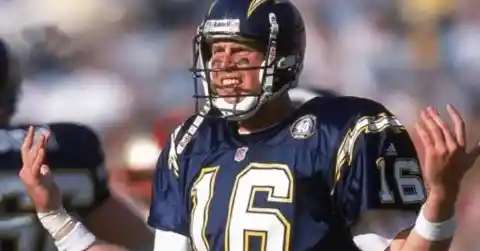
The other, Ryan Leaf, was drafted by the San Diego Chargers and went on to become one of the biggest busts the league’s ever seen. Leaf, whose career would be derailed by erratic play and behavior, would eventually run into trouble and spend time in prison after his retirement from the NFL.